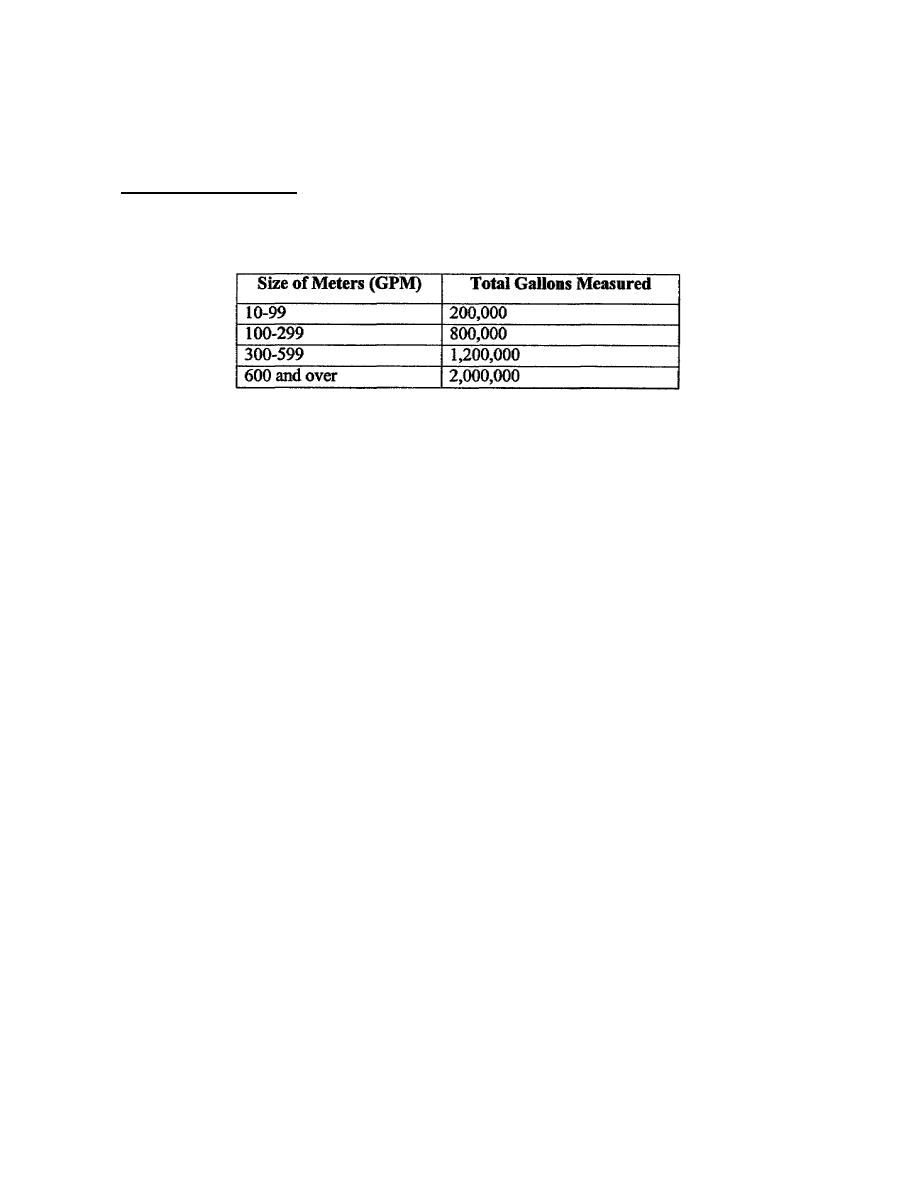
b. The strainer is downstream of the filter/separator in case you have a ruptured element. The strainer
will catch any fiberglass or filter paper that might get into the meter and cause it to hang up. There would also be
a strainer in the system on the suction side of the pump. This would prevent any trash from entering the
filter/separator.
5.
Verification Requirements.
a. Meters must be verified based on the following factors:
Table 17-1. Meter Verification Factors
Every meter must be verified every 12 months or whenever the meter is suspect, whichever comes first. The
meter must be within .0025 (1/4 gallon) for every 100 gallons registered by the master meter. If the meter is out
of tolerance by more than .0025, then it must be adjusted, or taken out of service. If this cannot be done, then you
may use the mer factor to adjust the meter registered reading on the gallons pumped. The instructions for
adjusting the meter are normally placed inside the top cover or in the manufacturer's manual.
b. Considerations
(1) A meter should be proved in its normal installation at the expected operating rates of flow, under
the pressure and temperature at which it will operate and on the liquid which it will measure. In situations where
it is not practical to prove the meter on the liquid to be metered, the meter should be proved on a liquid having a
density (API gravity) and viscosity as close as possible to those of the liquid to be measured. A meter that
measures several different liquids should be proved on each such liquid.
(2) The proving of a meter is like a laboratory test; when properly done, it can provide a high degree
of repeatability, which is necessary for measurement accuracy. There are as many details of the meter, its piping
and the proving system, which can contribute to measurement uncertainty, as there are in determining physical
properties of the measured liquid, temperature, corrosion, and trapped air. Thorough inspection of the provers
and their appurtenances should be made with sufficient frequency to ensure reproducibility of proving results. It
is essential that meter performance data be observed, recorded, and studied, and that calculations be correct.
c. Preparation
(1) The prover must have the capacity for no less than the volume delivered through the meter in one
minute. Exceptions are the 5- and 10- gallon prover cans where meters are verified for field accuracy.
17-5
QM5200


 Previous Page
Previous Page
